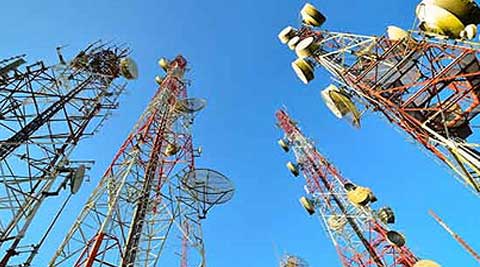Sinclair and Nexstar Form ATSC 3.0 Spectrum Consortium

IRVING, TEXAS and BALTIMORE—Nexstar and Sinclair, which together run 343 television stations reaching 60 percent of the country, are joining forces to launch ATSC 3.0, the so-called “Next-Gen” broadcast transmission standard now in its later stages of completion. The two broadcast groups said they have entered into a memo of understanding to establish “a consortium that will promote spectrum aggregation, innovation and monetization and enhance their abilities to compete in the wireless data transmission sector.”
The consortium will be jointly owned and controlled equally by both companies, but they will collaborate on a non-exclusive basis with the intent to include other broadcasters. The notion that competing broadcasters across markets will have to coordinate in order to deploy ATSC 3.0 has been discussed for a while how. One approach, for example, is that a single station in a market would start transmitting in 3.0 and carry other stations’ 3.0 signals as they light up, while yet another station would carry all the ATSC 1.0 legacy signals, until 1.0 is shut off. This is known as the “lighthouse-nightlight” approach. The consortium will further explore ATSC 3.0 business models:
“This consortium has been established in anticipation of the adoption of the ATSC 3.0 ‘Next-Generation’ broadcast transmission standard and its proven capabilities,” the pair said in a joint statement. “The consortium will promote innovation and develop and explore products and services associated with ATSC 3.0 and monetization opportunities such as spectrum utilization, virtual MVPD platforms, multicast channels, automotive applications, single-frequency networks and wireless data applications, among others.”
Unlike the current transmission standard, one-dot-oh, ATSC 3.0, will be able to reach broadband-connected devices, including smartphones and tablets, which will provide much deeper and more detailed user data than traditional broadcast ratings platforms. Nexstar and Sinclair said they “expect to capture significant and meaningful information relating to consumers’ actual viewing and consumption behaviors.
“As a result, broadcasters will no longer have to rely on expensive third-party measurement services with small sample sizes and unverified results. The value of this captured data across all Next Gen-enabled devices and their users can be monetized several ways. For advertisers, it will provide greater efficiency for their spend with elevated addressability, personalization and accountability. Similarly broadcasters will realize greater efficiencies in reaching and monetizing a significantly larger advertising market.”
Both Sinclair and Nexstar advocated for ATSC 3.0 early and often, with Sinclair sinking substantial resources into the development of the standard.
Nexstar chairman, president and CEO, Perry A. Sook, said joining forces with Sinclair will enable a faster roll-out and better use of the standard’s capabilities. ATSC 3.0 transmission turns a broadcaster’s 6 MHz channel into a bit pipe of roughly 24 Mbps that can carry anything from a single programming stream with all the 4K, high-dynamic range, multiple language, object-audio bells and whistles, to multiple programming streams and/or data payloads with elastic and manageable capacity for each.
ATSC 3.0 is referred to as “a” standard, but is actually several standards rolled into one, for flexibility of deployment now and upgrading later on. The Federal Communications Commission has an active Notice of Proposed Rulemaking that would allow for voluntary deployment of the physical layer portion of the standard. Comments on this NPRM are due May 9, with replies due June 8.
Sook said the consortium “welcome[s] the involvement of other broadcasters who share our enthusiasm for the new technology which will allow our industry to continue to thrive in today’s multiplatform world.”
Chris Ripley, president and CEO of Sinclair said, “Nexstar shares our vision for broadcast standard innovation and the benefits of knowing with precise accuracy who is viewing our programming, what they’re watching and when they’re watching. Data gathering, measurement and viewer behavior are critical considerations for advertisers and our collaborative initiative will ensure that Sinclair, Nexstar and perhaps other industry participants are out of the blocks quickly once ATSC 3.0 is launched.
“We believe this effort will maximize the value of our programming and ad inventory while creating new cross-platform revenue opportunities that will benefit our respective shareholders.”
Nexstar owns, operates, programs or provides sales and other services to 170 television stations and related digital multicast signals reaching 100 markets or nearly 39 percent of all U.S. television households. Sinclair owns, operates and/or provides services to 173 television stations in 81 markets broadcasting 508 channels.
For more on this subject, visit ourATSC 3.0 silo.
The professional video industry's #1 source for news, trends and product and tech information. Sign up below.
